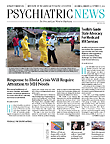The public was shocked by Robin Williams’ suicide on August 11. Mr. Williams was beloved for his immense comic talent and his earnest, uplifting roles in movies such as “Awakenings,” “Dead Poets Society,” and “Good Will Hunting.” His public persona always matched his popular roles: cheerful, playful, and free-spirited. He brought joy and laughter to people all around the world, so his fans could not understand how someone so loved and full of mirth could suddenly resort to brutal self-destruction.
The media quoted friends who declared that he had long “struggled with demons” and “lived in a dark place.” But this only deepened the mystery: if Mr. Williams—a man with great wealth and resources—was known to be suffering, why didn’t he get the help he needed?
In my view, Mr. Williams’ untimely demise at his own hand illustrates the lethal power of the enduring stigma of mental illness—though the scale and tone of the ensuing media coverage also gives us all reason for hope that things may finally be changing. Media outlets rushed to address the usually avoided topic of mental illness by asking mental health professionals to describe the causes and warning signs of suicide and means of prevention. Yet, even though things are changing, they did not change fast enough to save Mr. Williams.
The media widely reported that Mr. Williams had suffered from depression, severely complicated by intermittent alcohol and drug abuse. These are the two greatest risk factors associated with suicide. The media also reported that he had recently undergone heart surgery, and it has long been known that heart disease and heart surgery can trigger or exacerbate depression for both physiologic and psychological reasons. And if that were not enough, as a 63-year-old white male, he was in the demographic group with the highest suicide rate. If an insurance company had performed an actuarial analysis on Mr. Williams, he would have been immediately placed in the “high risk” category.
In the months since his death, many people have asked why more wasn’t done to prevent his suicide? Imagine if we were talking about heart disease rather than mental illness, and doctors recognized that Mr. Williams was at
high risk for a heart attack because of well-known factors like smoking, high cholesterol, obesity, and a family history of heart disease. His primary care physician would have counseled him on his diet and lifestyle and almost certainly placed him on a cholesterol-lowering medication and daily aspirin while closely monitoring his heart function. And if he was believed to be at imminent risk for a heart attack, as reflected by chest pain or EKG changes, we could be confident he would receive an angioplasty to relieve the blockage in his coronary arteries. This now-standard mode of active surveillance and preventive care has reduced the mortality of heart disease in the United States by 50 percent over the last half century.
Meanwhile, the rate of suicide (12.4 deaths per 100,000 individuals; 39,000 Americans each year) has remained constant, despite tremendous advances in our scientific understanding of how to identify those at risk for suicide, treat them, and ultimately prevent them from taking their lives.
Like the Ebola virus or swine flu, suicide is contagious. When a celebrity commits suicide, there is frequently a spike in suicide rates. Within a month of Mr. Williams’ death, three doctors within my New York medical community also took their lives. When such outbreaks occur with infectious diseases or toxic exposures, the Centers for Disease Control and Prevention immediately springs to action to analyze the situation and implement public health protocols. When suicide begins to spread, however, there is no organized medical response. Why not? Is there a lack of knowledge about what to do or an absence of effective technologies or treatments? No, it’s because of the stigma of mental illness. We are afraid to admit it exists, afraid to talk openly about it, and afraid that doctors don’t really know how to help.
As Mr. Williams’ grievous death reminds us, the costs of not treating mental illness are enormous. The World Health Organization estimates that about 450 million people in the world suffer from mental illness—over 60 million in the United States (see page 6). The annual global cost of caring for mental illness is estimated at $2.5 trillion (about $300 billion in the United States). The WHO studies on the Global Burden of Disease lists psychiatric illnesses as the third most costly group of diseases after cardiovascular and infectious diseases, and projects that by 2030 depression will be the single most costly disorder in the world.
Whether we can forestall this prediction from coming true will be a test of our capacity to learn and grow as a society. We must overcome our historic aversions and prejudices toward mental illness and make the choice to speak openly and honestly about them when they strike our loved ones and to show sympathy and support when we learn that others are suffering from them. The solution is no longer a question of research and science, but our willingness to change our attitude toward some of the most prevalent disorders of our time. ■

